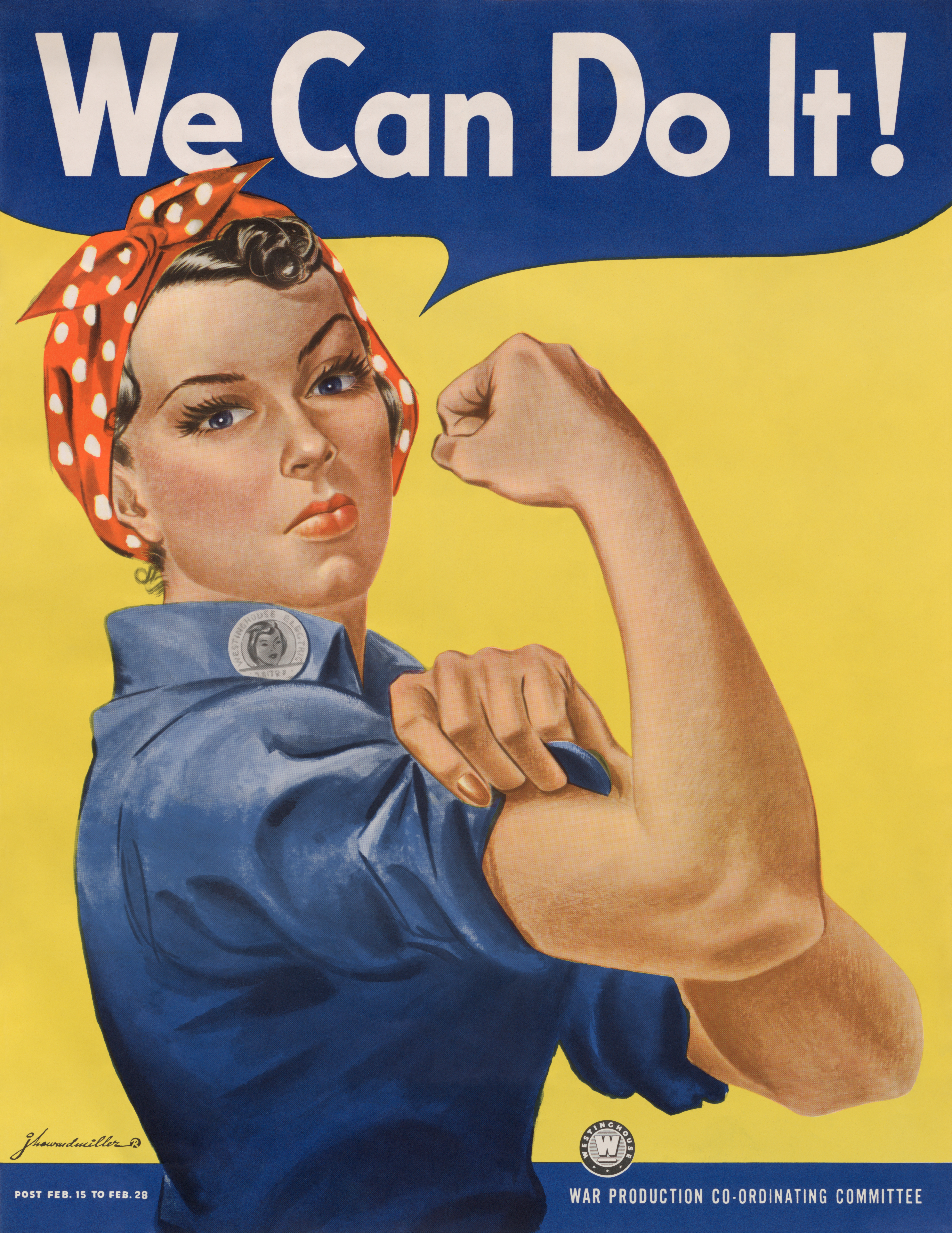Difference between revisions of "We Can Do It"
(Partial import from https://en.wikipedia.org/w/index.php?title=We_Can_Do_It!&oldid=1125894596) |
m (Robert Brockway moved page We can do it to We Can Do It) |
(No difference)
| |
Revision as of 01:55, 17 December 2022
We Can Do It is an American World War II wartime poster produced by J. Howard Miller in 1943 for Westinghouse Electric as an inspirational image to boost female worker morale.
The poster was little seen during World War II. It was rediscovered in the early 1980s and widely reproduced in many forms, often called "We Can Do It!" but also called "Rosie the Riveter" after the iconic figure of a strong female war production worker. The "We Can Do It!" image was used to promote feminism and other political issues beginning in the 1980s.[1] The image made the cover of the Smithsonian magazine in 1994 and was fashioned into a US first-class mail stamp in 1999. It was incorporated in 2008 into campaign materials for several American politicians, and was reworked by an artist in 2010 to celebrate the first woman becoming prime minister of Australia. The poster is one of the ten most-requested images at the National Archives and Records Administration.[1]
After its rediscovery, observers often assumed that the image was always used as a call to inspire women workers to join the war effort. However, during the war the image was strictly internal to Westinghouse, displayed only during February 1943, and was not for recruitment but to exhort already-hired women to work harder.[2] People have seized upon the uplifting attitude and apparent message to remake the image into many different forms, including self empowerment, campaign promotion, advertising, and parodies.
After she saw the Smithsonian cover image in 1994, Geraldine Hoff Doyle mistakenly said that she was the subject of the poster. Doyle thought that she had also been captured in a wartime photograph of a woman factory worker, and she innocently assumed that this photo inspired Miller's poster. Conflating her as "Rosie the Riveter", Doyle was honored by many organizations including the Michigan Women's Historical Center and Hall of Fame. However, in 2015, the woman in the wartime photograph was identified as then 20-year-old Naomi Parker, working in early 1942 before Doyle had graduated from high school. Doyle's notion that the photograph inspired the poster cannot be proved or disproved, so neither Doyle nor Parker can be confirmed as the model for "We Can Do It!".
